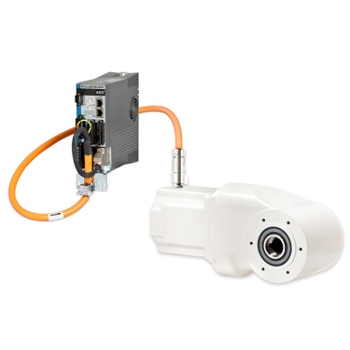
Machine designers and specifiers increasingly have to look at creating motion control systems. It is quite a complex specialism, so Gerard Bush of INMOCO has compiled the following guide.
The most important thing to know about motion control is that it is used in many different types of machine design and engineering. Every application is unique, and some are very different from others, so there are no universal answers and it is always best to get expert help from the outset. You should not tell the expert what sort of system you want but what you want your system to be able to do – and any restrictions that apply – then let them advise you about the technical solutions.
The components in a motion system can be listed as follows:
Motors: Usually servos (AC or DC) but can be steppers or even high-performance induction motors.
Mechanical elements: ballscrews, linear actuators and other positioning devices. Also, couplings, gearheads and other drive line components.
Electronics: drives or amplifiers for use with the motors, plus a motion controller and sensors for overall command. (Sometimes the controller is integrated with the amp, other times it could be a dedicated unit, or a standard PLC configured with a motion card.)
An expert motion engineer will be able to identify the best types of components for particular applications. For instance, DC servos may be best in mobile applications, while the affordability of steppers has to be balanced against their lower precision capabilities. Choosing between a ballscrew, rollerscrew or belt actuator will depend on speed, load and positioning accuracy.
The first stage in the design process is to define what the machine is required to do in terms of motion control, speed, accuracy, repeatability, variance, life expectancy etc. At this stage there is a need to be realistic and identify limits, optional extra etc. Thus, an appropriate concept design is developed rather than an all-singing-all-dancing one that will cost a fortune and offers features that are only rarely used.
It is important to consider the dynamic loads the system will be subject to during normal operation and also the maximum loads that may arise in unusual circumstances. The structural elements and the power of the drive system need to be sized to cope with the latter, but costly over-engineering should be avoided. It is worth bearing in mind that component costs can rise dramatically with performance capabilities so over specifying can be an expensive luxury.
Dynamics
There are some rules of thumb that motion engineers will use during the early stages of the design process. As the design is finalised these will be checked in more detail to make sure an optimum solution is arrived at. Naturally, there are some ‘tricks of the trade’, such as knowing that servo motors can cope with occasional brief overloads without damage so do not have to be sized for the maximum-ever overload. Similarly, optimum deceleration profiles can be used as loads approach their destination point so that positional accuracy is maximised. On the other hand, an expert will know when it is worth paying for nanometre accuracy or extra load capacity.
A good designer will know that it is all but inevitable that the performance needs of any machine or system will change over time. Thus it is always worth trying to predict future requirements and seeing if they can be accommodated in the initial design. If you get this right you will save not only the cost of a future redesign, but also the loss of production and other on-costs.
Probably the most common future change is a need to increase production and therefore machine speed. Second most common is an increase in load, typically to make bigger products or to make two at a time for extra throughput. Less likely is a need to improve precision.
Lengthening life
A precision motion system must, by its very nature, be able to produce its stated level of accuracy time and time again. This implies that the system will need some degree of specialist maintenance and it is best to ensure that this is considered from the outset. Therefore, it is always wise to use a motion vendor that is able to provide appropriate levels of technical backup. This may mean regular service schedules, assistance via a specialist helpline or, perhaps best of all, choosing a vendor who wants to form a long and supportive relationship – one who can be called upon in an emergency and who is always happy to offer advice about future developments.
In motion control, as in all engineering endeavours, costs must be managed, and budgets hit. Parts can be expensive, but so can time, so expert advice from the outset (often given at no cost) will always be worth taking.
